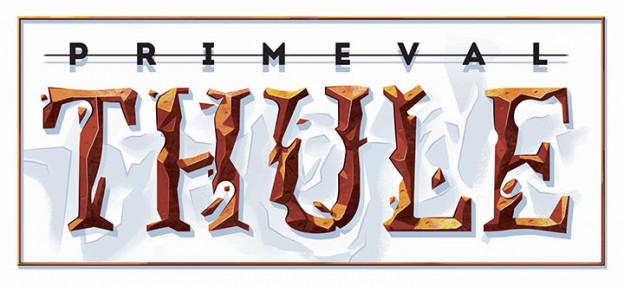While there are hundreds of stories and myths that inspire the D&D game, everybody remembers the beloved Appendix N that appeared in the 1st Edition Dungeon Master’s Guide: Inspirational and Educational Reading. We all think of fantasy epics such as the Lord of the Rings or the Chronicles of Narnia as the most direct and important influences on the D&D game, but as it turns out, Appendix N is dominated by stories of a different sort, the fantasy adventure yarns that filled the pages of the pulp magazines of the early 20th century. These are stories of brawling action or cosmic horror, lurid and sensational, and they’re part of the foundation of the tabletop RPG hobby.
Thule is a world built on the traditions of pulp fantasy and pulp horror, as opposed to epic fantasy. Robert E. Howard’s Conan and Kull stories describe a lost age of the Earth where barbarians and freebooters carved out their fortunes with the sharp edges of their swords. Clark Ashton Smith’s Hyperborea tales blend the horrors of the Cthulhu Mythos with ironic misfortune in a world threatened by the coming ice. Edgar Rice Burroughs’ stories gave us lost worlds such as Pellucidar and the Land That Time Forgot, and even his Tarzan stories visited fantastic places such as Opar, Thenar, and Minuni. And of course HP Lovecraft established the idea that terrible, alien gods and their awful cults lurked in the mists of prehistory and the remote places of the world.
Pulp adventure fantasy isn’t just limited to Weird Tales and old Burroughs series. Plenty of movies touch on the themes of lost worlds and barbarian heroes. Sure, many of them are terrible, but flicks such as Conan the Barbarian, Conan the Destroyer, The Beastmaster, The Scorpion King, or 10,000 BC bring pulp fantasy to life on the big screen. Even TV shows like Xena or Spartacus rely on the visuals and the tropes of the sword-and-sandals genre. Is it high art? Not necessarily. But you know it when you see it, and it’s usually a lot of fun.
Speaking of art, there’s one more Thule influence that we ought to mention: The paintings of artists such as Frank Frazetta, Roy Krenkel, and Boris Vallejo. These artists illustrated many of the Burroughs novels and the collected Howard stories, giving us many of our most recognizable images for Conan, Tarzan, and other pulp fantasy heroes. Brawny swordsmen in loincloths and half-naked women in peril may not be very 21st-century, but these images fire the imagination and whisper of bold adventure in a fantastic setting—and Primeval Thule aims to capture exactly that mood. For the last dozen years or so, D&D art has been strikingly practical, showing adventurers in complete armor and shying away from the lurid and sensational imagery of the game’s youth. We’d like to swing the pendulum back the other way for a change.
What do you get when you mix brawling action, lost worlds, and antediluvian horrors with the monsters and characters of the D&D game? You get one hell of a fun game, that’s what!


